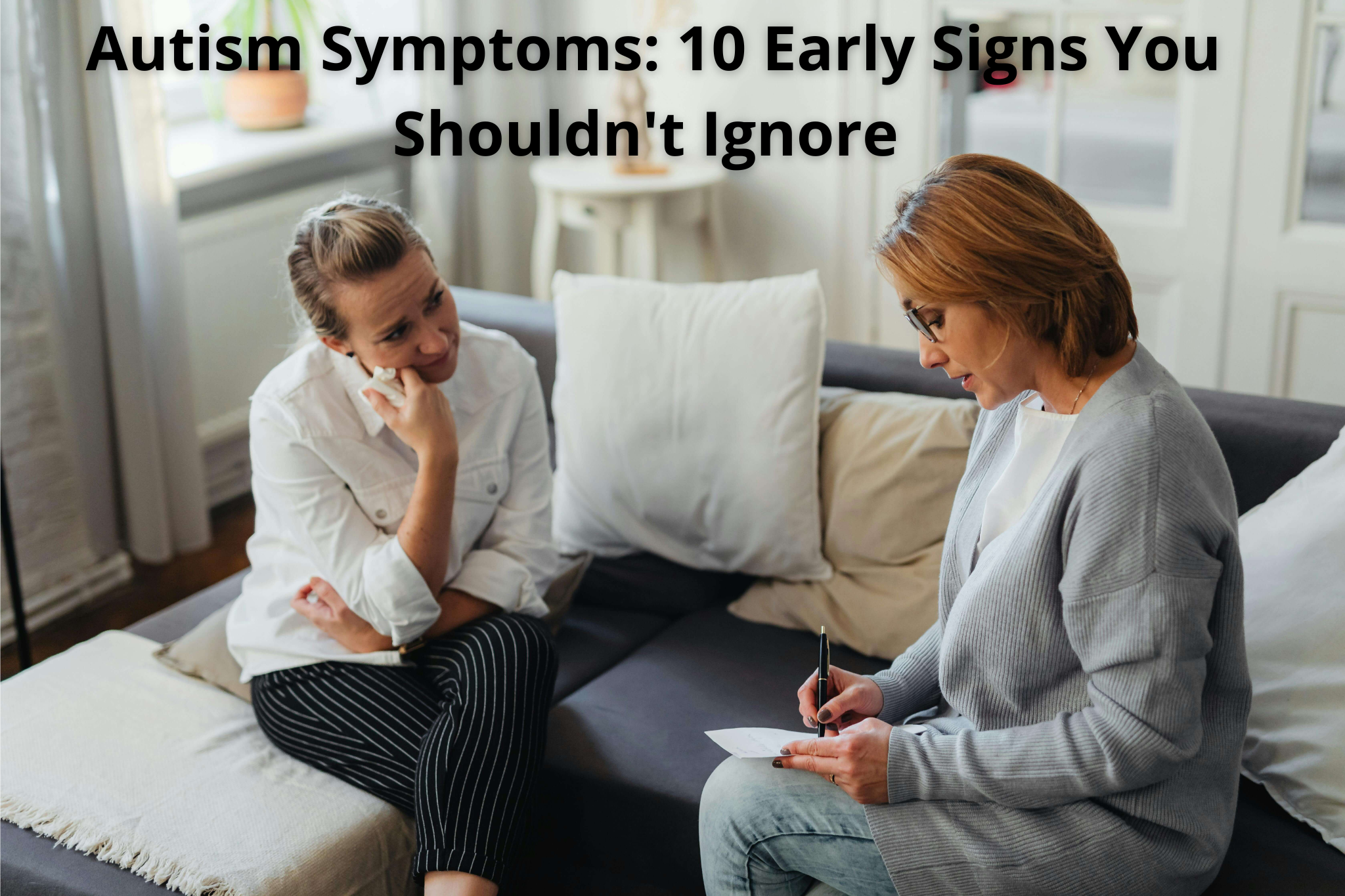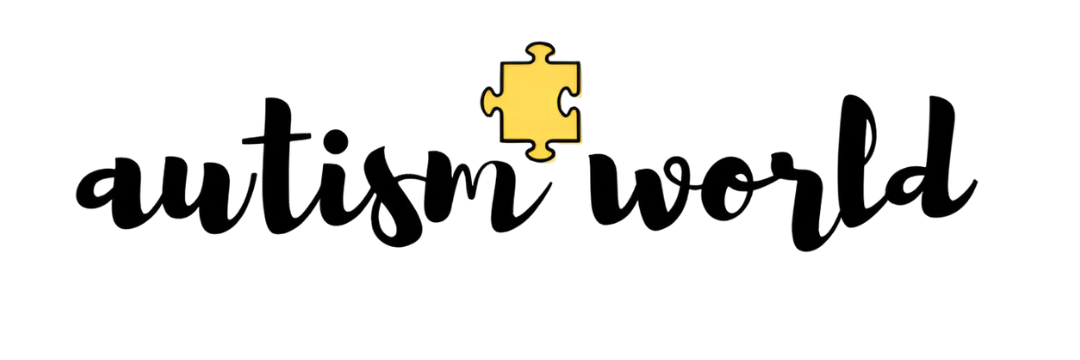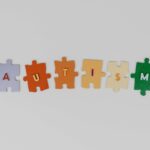With 9 years of experience in the kitchen, I’m passionate about crafting delicious recipes and sharing them with food lovers worldwide. 🍽️✨ Whether it’s a comforting homemade dish or a creative cocktail, my goal is to make cooking fun, easy, and enjoyable for everyone. Join me on this flavorful journey! 🍹🥗

Autism Symptoms: 10 Early Signs You Shouldn’t Ignore
Autism Symptoms: 10 Early Signs You Shouldn’t Ignore
Recognizing signs of autism early can significantly impact the support and interventions available for individuals with autism spectrum disorder (ASD). This comprehensive guide aims to provide you with a clear understanding of the early indicators of autism in both children and adults, helping you identify potential concerns and seek professional guidance when needed. Early detection is key to ensuring individuals receive the appropriate support to thrive. Understanding these signs of ASD is crucial for providing early intervention.
What Is Autism?
Autism Spectrum Disorder (ASD) is a neurodevelopmental condition characterized by persistent deficits in social communication and social interaction across multiple contexts, along with restricted, repetitive patterns of behavior, interests, or activities. These signs are typically present in early childhood and can affect daily functioning. The term “spectrum” reflects the wide variation in the type and severity of ASD indicators that individuals experience. Some individuals may have significant challenges with communication and require substantial support, while others may have milder signs and function independently.
It’s important to note that autism is not a disease; it’s a different way of processing information and interacting with the world. Understanding autism requires empathy, patience, and a commitment to providing tailored support based on individual needs.
Why Is Early Detection of Autism Symptoms Important?
Early detection of ASD signs is paramount because it allows for timely intervention and support. The earlier interventions begin, the more significant the impact on a child’s development and long-term outcomes. Early intervention programs focus on improving communication skills, social interaction, and adaptive behaviors. These programs can help children with autism reach their full potential and lead more fulfilling lives. Moreover, early diagnosis can help families access appropriate resources, educational services, and therapeutic support.
Furthermore, understanding ASD indicators early can reduce parental stress and anxiety. When parents are informed and equipped with the right strategies, they are better able to support their child’s needs and navigate the challenges of raising a child with autism. Early diagnosis can also facilitate acceptance and understanding from family members, friends, and the community.
The Centers for Disease Control and Prevention (CDC) emphasizes the importance of developmental monitoring and screening to identify children who may be at risk for autism or other developmental delays. Regular check-ups with a pediatrician can help track a child’s development and identify any potential concerns early on. More information on this topic can be found on the CDC website.
Early Signs of Autism in Children
Recognizing the early signs of autism in children is crucial for early intervention. While every child develops at their own pace, certain behaviors and developmental milestones can indicate the possibility of autism. These signs typically become noticeable between 12 and 24 months of age. Here are some key ASD indicators to watch for:
1. Lack of Eye Contact
One of the earliest and most common ASD signs is a lack of consistent eye contact. Children with autism may avoid looking directly at others or may only make brief eye contact. This can be misinterpreted as shyness or disinterest, but it is often a key indicator of ASD.
2. Delayed Speech and Language Development
Delayed speech and language development is another significant sign. This can include a lack of babbling by 12 months, not using single words by 16 months, or not using two-word phrases by 24 months. Some children with autism may develop language and then regress, losing previously acquired skills.
3. Repetitive Behaviors
Repetitive behaviors are characteristic of autism. This can include repetitive movements like hand flapping, rocking, or spinning. Children with autism may also engage in repetitive speech, such as repeating phrases or words (echolalia). These behaviors often serve as a form of self-stimulation or a way to cope with sensory overload.
4. Difficulty with Social Interaction
Children with autism often have difficulty with social interaction. They may not respond to their name, show interest in playing with other children, or understand social cues. They may also struggle to initiate or maintain conversations and may prefer to play alone.
5. Fixated Interests
Children with autism may have intense and fixated interests in specific topics or objects. They may spend hours focusing on these interests and may become upset if their routines are disrupted. These fixations can be a source of comfort and enjoyment, but they can also interfere with social interaction and learning.
6. Sensory Sensitivities
Many individuals with autism have sensory sensitivities, meaning they are either over- or under-sensitive to sensory input. This can include sensitivity to sounds, lights, textures, tastes, or smells. For example, a child with autism may be bothered by loud noises, bright lights, or certain fabrics.
7. Difficulty Understanding Emotions
Understanding and expressing emotions can be challenging for children with autism. They may struggle to recognize emotions in others or express their own feelings appropriately. This can lead to difficulties in social situations and relationships.
8. Unusual Play Patterns
Children with autism may exhibit unusual play patterns. They may line up toys instead of playing with them in a typical way, or they may focus on specific parts of toys (e.g., spinning the wheels of a car). Their play may lack imagination or creativity.
9. Resistance to Change
Resistance to change is a common ASD indicator. Children with autism often thrive on routine and predictability. Any deviation from their established routines can cause anxiety and distress. They may have difficulty transitioning between activities or adapting to new situations.
10. Lack of Imitation
Imitation is an important part of early development. Children with autism may have difficulty imitating others’ actions or gestures. This can affect their ability to learn new skills and participate in social interactions.
If you observe several of these ASD signs in a child, it is important to seek professional evaluation and guidance. Early intervention can make a significant difference in the child’s development and quality of life. You may also want to review our services, as we provide additional resources for parents.
Early Signs of Autism in Adults
While autism is typically diagnosed in childhood, some individuals may not be diagnosed until adulthood. This can be due to a variety of factors, including milder ASD indicators, masking (consciously or unconsciously suppressing autistic traits), or a lack of awareness about autism in adults. Identifying ASD signs in adults can be more challenging, as these individuals may have developed coping mechanisms to navigate social situations. However, certain signs and characteristics may indicate the presence of autism. Here are some common indicators:
1. Difficulty with Social Interaction
Adults with autism may struggle with social interaction. They may find it difficult to understand social cues, make small talk, or maintain relationships. They may also feel awkward or uncomfortable in social situations and may prefer to avoid them altogether. Misunderstandings in communication are also common.
2. Intense Interests
Similar to children with autism, adults may have intense and focused interests in specific topics or hobbies. They may spend a significant amount of time pursuing these interests and may have extensive knowledge about them. While these interests can be a source of enjoyment, they can also lead to social isolation if they are not shared by others.
3. Sensory Sensitivities
Sensory sensitivities can persist into adulthood. Adults with autism may be hypersensitive or hyposensitive to sensory stimuli, such as sounds, lights, textures, or smells. This can lead to discomfort, anxiety, or sensory overload in certain environments.
4. Difficulty with Emotional Regulation
Emotional regulation can be challenging for adults with autism. They may experience intense emotions that are difficult to manage, or they may have difficulty expressing their emotions appropriately. This can lead to misunderstandings and conflicts in relationships.
5. Preference for Routine
A strong preference for routine and structure is common among adults with autism. They may feel anxious or overwhelmed when their routines are disrupted. They may also have difficulty adapting to changes in their environment or schedule.
6. Literal Thinking
Adults with autism often think in a very literal and concrete way. They may have difficulty understanding sarcasm, metaphors, or abstract concepts. This can lead to misunderstandings in communication and social interactions.
7. Challenges with Executive Functioning
Executive functioning skills, such as planning, organization, and time management, can be challenging for adults with autism. They may struggle with tasks that require these skills, such as managing finances, organizing their home, or meeting deadlines.
8. Social Anxiety
Many adults with autism experience social anxiety due to the challenges they face in social situations. They may worry about saying the wrong thing, being judged by others, or not fitting in. This can lead to avoidance of social situations and feelings of isolation.
9. Difficulty with Nonverbal Communication
Nonverbal communication, such as body language, facial expressions, and tone of voice, can be difficult to interpret for adults with autism. They may struggle to understand these cues in others, or they may have difficulty using them themselves. This can lead to misunderstandings and difficulties in social interactions.
10. Masking Autistic Traits
Some adults with autism may engage in masking, which involves consciously or unconsciously suppressing their autistic traits in order to fit in and avoid negative attention. While masking can be helpful in certain situations, it can also be exhausting and detrimental to mental health. Masking can also make identifying ASD signs much more challenging.
If you identify with several of these ASD indicators, it may be helpful to seek professional evaluation to determine if you have autism. A diagnosis can provide validation, access to support services, and a better understanding of yourself. Feel free to contact us for guidance.
When to Seek Professional Help
Knowing when to seek professional help is crucial for both children and adults who may be exhibiting ASD signs. If you notice any of the aforementioned signs or have concerns about a child’s development or an adult’s social and communication skills, it is important to consult with a qualified professional. Early intervention and support can significantly improve outcomes for individuals with autism.
For children, it is recommended to start with their pediatrician. The pediatrician can conduct an initial assessment and refer the child to specialists, such as developmental pediatricians, child psychologists, or speech therapists. These specialists can conduct a comprehensive evaluation and provide a diagnosis if appropriate.
For adults, seeking professional help may involve consulting with a psychologist, psychiatrist, or therapist who has experience working with individuals with autism. These professionals can conduct an assessment, provide a diagnosis, and offer therapeutic support to help adults manage their ASD indicators and improve their quality of life.
The Autism Diagnosis Process
The autism diagnosis process typically involves a comprehensive evaluation by a multidisciplinary team of professionals. This team may include developmental pediatricians, psychologists, speech therapists, and occupational therapists. The evaluation usually involves gathering information about the individual’s developmental history, observing their behavior, and administering standardized assessments.
For children, the evaluation may include the Autism Diagnostic Observation Schedule (ADOS), which is a standardized assessment that involves observing the child’s social interaction and communication skills in a structured setting. The evaluation may also include parent interviews and questionnaires to gather information about the child’s behavior at home and in other settings.
For adults, the evaluation may include the Autism Diagnostic Interview-Revised (ADI-R), which is a structured interview with the individual and/or their family members to gather information about their developmental history and current ASD signs. The evaluation may also include self-report questionnaires and observations of the individual’s behavior in various settings.
Based on the information gathered during the evaluation, the team will determine whether the individual meets the diagnostic criteria for autism spectrum disorder (ASD) as outlined in the Diagnostic and Statistical Manual of Mental Disorders (DSM-5). If a diagnosis is made, the team will develop a treatment plan that is tailored to the individual’s specific needs and goals.
Support and Resources for Autism
Numerous support and resources are available for individuals with autism and their families. These resources can provide information, guidance, and practical support to help individuals navigate the challenges of living with autism. Here are some valuable resources:
- Autism Speaks: Autism Speaks is a leading autism advocacy organization that provides information, resources, and support to individuals with autism and their families. Their website offers a wealth of information on autism, including diagnosis, treatment, and advocacy.
- The Autism Society: The Autism Society is another prominent autism advocacy organization that provides support and resources to individuals with autism and their families. They offer local chapters across the country that provide support groups, educational programs, and advocacy services.
- The National Autistic Society (UK): A leading UK charity for people on the autism spectrum and their families. They provide information, support, and services.
- Local Autism Support Groups: Many communities have local autism support groups that provide a safe and supportive environment for individuals with autism and their families to connect with others, share experiences, and learn from each other.
- Government Agencies: Government agencies, such as the Centers for Disease Control and Prevention (CDC) and the National Institutes of Health (NIH), provide information and resources on autism research, diagnosis, and treatment.
These resources can be invaluable for individuals with autism and their families, providing them with the information, support, and advocacy they need to thrive. Remember to learn more about us and the support we provide.
Coping Strategies for Individuals with Autism and Their Families
Developing effective coping strategies is essential for individuals with autism and their families to manage the challenges and stressors associated with the condition. These strategies can help individuals with autism regulate their emotions, manage sensory sensitivities, and navigate social situations. For families, coping strategies can help them manage the demands of caring for a child with autism and maintain their own well-being.
Here are some coping strategies for individuals with autism:
- Creating a structured routine: Establishing a predictable daily routine can help individuals with autism feel more secure and less anxious.
- Using visual supports: Visual supports




